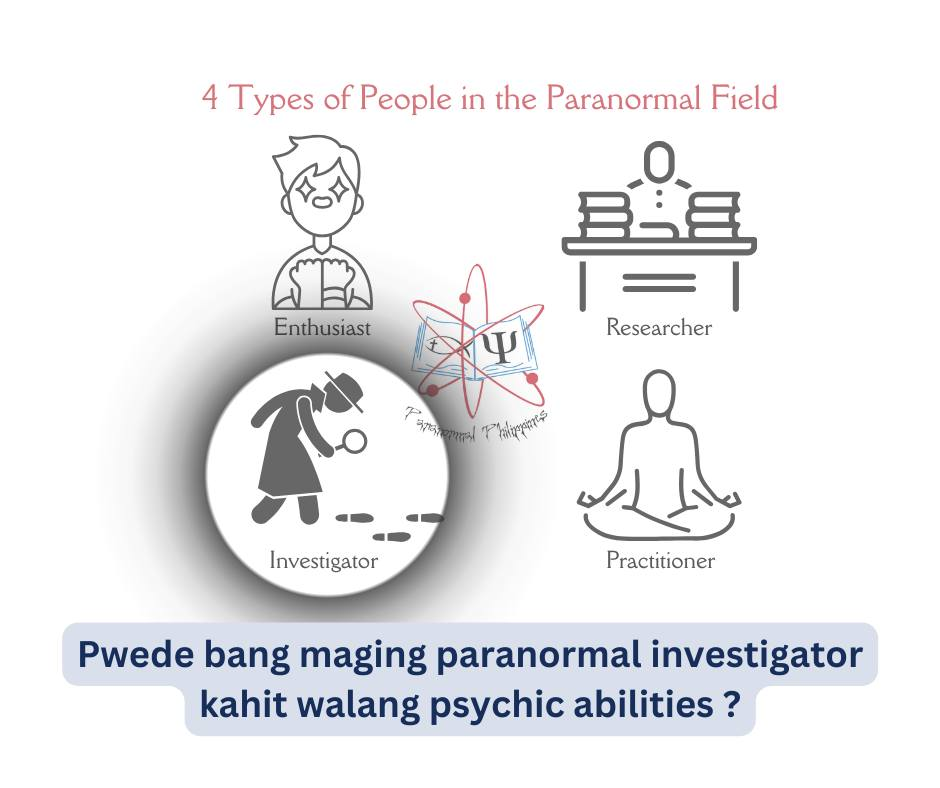Preliminary Investigation: Location
Why Preliminary Investigation Matters
Before jumping into EMF meters or spirit boxes, every solid paranormal case starts with Preliminary Investigation—the careful documentation of a case (the site and the people involved). This step grounds the case in facts: what the place is like, who the witnesses are, and what conditions might explain or influence the reports. Without this foundation, any later findings risk being misread or taken out of context.
It’s different from an Exploratory Inspection, which is more hands-on and test-focused—walking through the site, checking for drafts, listening for creaks, and running initial measurements. It’s practical observation meant to confirm or challenge the background data. The preliminary stage, by contrast, is about background knowledge and mapping: collecting histories, floor plans, geology, and witness backgrounds before you even begin deeper testing.
Think of it this way:
-
Preliminary Investigation = paperwork, mapping, interviewing, fact-gathering
-
Exploratory Inspection = boots on the ground, observing, confirming
| Category | What to Look At | Why It Matters in Paranormal Investigations |
|---|---|---|
| Historical Background | Research the site’s past—ownership, events, tragedies, cultural significance. | Paranormal claims often tie directly to history. If a site has records of deaths, disasters, or emotionally charged events, these can influence both actual phenomena and witness expectations. On the other hand, strong folklore may create legends that shape perception, even if nothing unusual happened. Understanding this context helps you separate genuine correlations from story-driven assumptions. |
| Geological Site | Study the ground beneath: soil type, bedrock, water tables, fault lines, etc. | Geology may affect reports in surprising ways. Some researchers suggest minerals like limestone or quartz might “record” or amplify energy. Meanwhile, underground water or seismic faults can cause electromagnetic disturbances or vibrations that people misinterpret as paranormal. By documenting these features, you can check if natural geology contributes to unusual sensations or instrument readings. |
| Architectural | Note the structure’s design, materials, age, and modifications over time. | Old or altered buildings often produce ordinary but eerie effects: settling wood, loose stones, temperature shifts from poor insulation, or acoustics that carry whispers. Renovations can create unusual drafts, resonances, or structural weaknesses that mimic activity. Understanding the architecture prevents false positives and also helps pinpoint where structural features might enhance or distort phenomena. |
| Electrical | Map wiring, outlets, power sources, and note their condition. | Electrical systems are notorious for creating false paranormal impressions. Faulty wiring or old appliances can generate high EMF fields that cause dizziness, headaches, anxiety, or the classic “being watched” feeling. Flickering lights—a common “ghostly” sign—are often simply due to loose connections, failing bulbs, or unstable voltage. Identifying and measuring these conditions is vital before attributing any sensation to the paranormal. This also keeps investigators safe from real hazards like sparks or shocks. |
Indoor Investigations
When working inside a home, building, or abandoned site, the key is documentation. By carefully mapping the location, you reduce false positives and strengthen any anomalous findings.
Here are the essentials to note:
| What to Document | Why It’s Important |
|---|---|
| All rooms of the location | Creates a complete map for tracking movement, sounds, and potential activity. Ensures nothing is overlooked. |
| Windows | Drafts, outside noises, or light from cars/streetlamps can mimic paranormal events. |
| Outlets, vents, and drafts | Electrical wiring may cause EMF fluctuations; vents and drafts can create cold spots or eerie sounds. |
| Mirrors and reflective surfaces | Reflections, shadows, or bounced light can appear as apparitions or glowing orbs. |
| Floors above/below rooms | Footsteps or sounds may be caused by people in other rooms or stories, not spirits. |
| Roads, neighboring houses, and neighbors | Traffic, voices, or outside vibrations may bleed into the environment. |
| Weather and temperature | Wind, humidity, and storms affect structures and human perception. |
| Doors | Loose hinges or uneven frames can cause doors to swing “on their own.” |
| Level floors | Slanted floors may cause objects to roll or people to feel off-balance—sometimes mistaken for paranormal presence. |
Outdoor Investigations: When Control Slips Away
Investigating outdoor sites—like cemeteries, ruins, or fields—is a different challenge. Without walls, sound and light contamination are almost impossible to contain.
Common Difficulties:
-
Sound contamination – Noises carry across long distances; voices or footsteps may come from blocks away.
-
Light & visual distortions – Car headlights, flashlights, fog, or reflections on stones can mimic anomalies.
-
Weather & environment – Wind, rain, humidity, or fog affect both the site and perception.
-
Animal & insect activity – Bats, owls, rustling grass, or fireflies can trigger false reports.
-
Terrain – Uneven ground may cause stumbles or “pushed” sensations.
-
Lack of boundaries – Outdoors, you can’t always pinpoint where a sound or light originates.
How to Compensate:
-
Place multiple audio recorders and cameras in fixed positions to cross-check anomalies.
-
Assign someone to monitor the perimeter for traffic, pedestrians, or stray lights.
-
Log weather conditions with a handheld meter (wind, pressure, humidity).
-
Scout the area in daylight to note hazards, animal activity, and sightlines.
-
Use timestamps across all equipment to sync personal experiences with environmental data.
⚡ Bottom line: Outdoors, you don’t eliminate variables—you manage them. Careful setup and layered documentation let you separate what’s explainable from what truly stands out.
Final Thoughts
Every paranormal location has its quirks. Indoors, you focus on documenting physical details that can cause false reports. Outdoors, you adapt to an open environment where almost anything can intrude.
The job of an investigator isn’t just to chase anomalies—it’s to question them, test them, and rule out the ordinary. Only then can we give the extraordinary the attention it deserves.
More information: Three-Stage Fieldwork Guide for Paranormal Investigations



Comments
Post a Comment